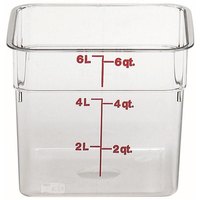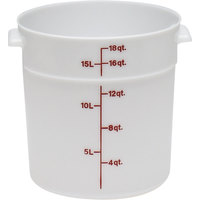I make up 3 lb batches of lye water at a time. I currently mix my solution in a heavy duty restaurant quality plastic bin. In the past, I have mixed it up in heavy duty plastic pitchers. Eventually, the lye eats through it all. I would like to not have to replace my lye container every couple of months.
What are you guys using to mix up your lye solution?
Thank you
Samish, you were asked what kind of plastic you were using, but so far haven't responded. From what you mentioned above, and my own restaurant experience, I conclude it would have been something like this, which if it is the polycarbonate version it definitely will NOT hold up to lye in solution:
Or this:
I don't have any of the second one pictured, so can't look at the bottom of the container to say if it would hold up to lye in solution.
Then you mentioned 'heavy duty plastic pitchers'. That description leaves out the most important part of determining if a container will hold up to lye in solution, as mentioned in the links provided by DeeAnna above.
Are you in the US or elsewhere? Where you live are the codes for plastics used on the bottom of plastics like we do in the US?
One other caveat, is that if you are using old plastic made before the recycle coding system was put into place, there is no way of knowing if those items are lye safe. I still own and see old plasticware sold in thrift stores produced before the recycle coding system was implemented, so I never use them for soap making.
I use a large plastic pitcher with a #5 symbol on the bottom for mixing my lye solution, and store the cooled solution in #2 symbol plastic bottles (from Essential Depot, that the dry NaOH came in). These are lye solution safe containers as mentioned in the links DeeAnna included.






